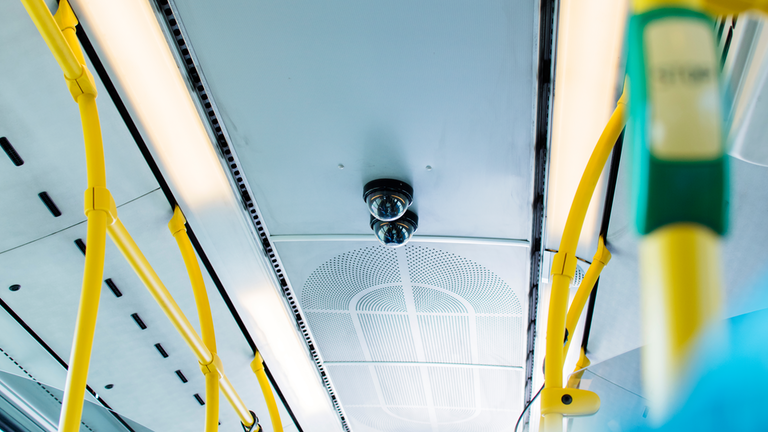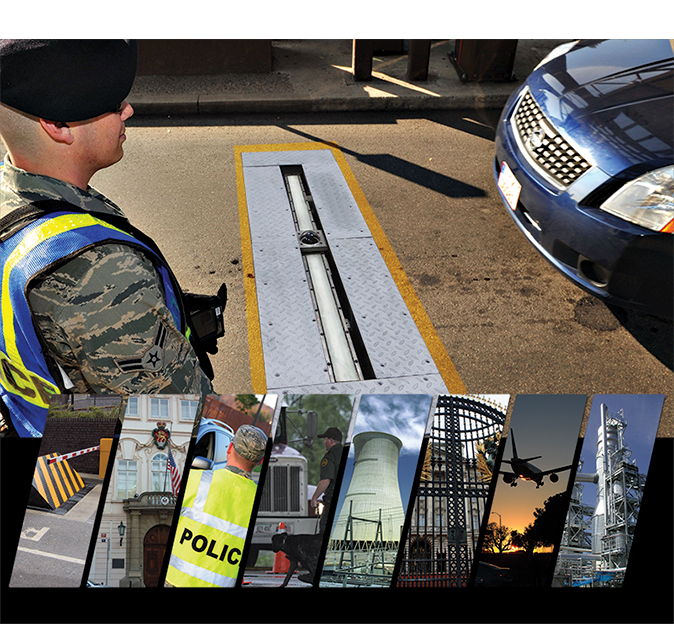Mobile video surveillance meets surveillance-grade microSD cards

Growing concern about public safety is prompting wider deployment of video surveillance by government agencies, private organizations, and consumers. A rising demand for mobile video surveillance systems in the transportation sector—including trains and trams, busses, transport vehicles and police automobiles—was valued at $1.4B in 2017, and it is expected to reach $2.7B by 2025 (CAGR of 9%).
With wide implementation of mobile video surveillance systems in these vehicles, a huge volume of data will be generated that will require system optimization among data storage, processing and communication from an end-to-end topology perspective—driving the next innovation in mobile video surveillance solutions.
Mobile video surveillance systems generally fall into two categories: cameras mounted in a vehicle with onboard storage, and cameras connected to a mobile recorder mounted in the vehicle.
In both scenarios, cameras cover the view of driver, passengers and outside activities. In addition to video monitoring, these solutions may be integrated with GPS tracking and other vehicle-related monitoring (such as fuel, speed, temperature, etc.). With system connectivity improvements, it is possible to transmit the data to a centralized management system; however, for cost efficiency and connection reliability reasons , surveillance video archives are typically stored in a local storage device (i.e. mobile recorder) in the vehicle and then synchronized to a central management system upon return to the station. Therefore, a robust storage solution is critical for successful operation of mobile video surveillance systems. This brief discusses how to select a suitable storage solution for your mobile video surveillance system.
Storage options for mobile video surveillance systems
Mobile video surveillance systems generally use one of three options for storing recorded video:
- Hard disk drive (HDD): Typically used in mobile recorders, HDDs require additional designs for protection from external vibration and shock.
- Solid state drive (SSD): Primarily used in mobile recorders given their capability of operating in harsh environments, SSDs offer protection from vibration and shock.
- microSD card: Broadly used in dash cameras, mobile IP cameras and recorders , microSD cards offer flexibility and size advantages.
Storage requirements for mobile video surveillance systems
To determine the most suitable storage option for a mobile video surveillance system, four key factors should be considered:
- Operation in a harsh environment: Since the system is installed in a vehicle, the solution must be resistant to vibration and shock, while also supporting a wide temperature range.
- Size of footprint: Mobile design aesthetics are trending to smaller, less obvious form factors; therefore, the size of the memory footprint is an important consideration. The figure below shows an example comparison among these three storage options.
- Storage retention: In general, a seven-day storage retention period covers most mobile video surveillance application usage models in the transportation sector. (See below for the range of storage size requirements depending on camera resolution and number of channels needed in the mobile video surveillance system.)
- Upgradability: A microSD card’s removability makes it perfect for storage upgrade requirements in the field. Increasing days of retention, upgrading camera resolution requirements, or adding additional cameras in a vehicle are all scenarios that are easily serviced by simply opening the camera/recorder slot and replacing the card with the appropriate density.
Design considerations using microSD cards as primary storage
Given the requirements discussed above, solid state storage with industrial, ruggedized design and up to 1TB capacity can address most use cases. Industry advancements in NAND technology have enabled high-density solutions in the microSD card form factor, enabling smaller footprint and removability features that provide additional system design benefits. As the microSD card becomes the mainstream primary storage in mobile surveillance, system designers, installers and end users must be aware that not all microSD products are the same. Key considerations with using microSD cards in mobile surveillance include:
- Endurance and quality: Is the microSD card designed to handle three years of continuous recording? A typical mobile video surveillance system needs to be ruggedized toward all-weather resistance. To reduce maintenance and decommission costs during service years and lower TCO, a high-endurance, surveillance-optimized microSD card is essential.
- Recording performance: Does the solution give confidence that the card is capturing all essential and critical footage at all times? Continuous video recording into a microSD card can cause frame drop issues. The microSD card must optimize its recording performance for surveillance usage to reduce the risk of data loss.
Introducing Micron’s Industrial microSD card for mobile video surveillance systems
Micron’s industrial microSD cards are specifically designed for edge video surveillance workloads and features:
- Storage densities of 32GB, 64GB, 128GB, 256GB, 512GB and 1TB enable more video to be stored at the edge and increase design flexibility
- Three years of high-quality, continuous, 24×7 video recording in a wide range of temperatures and environments
- A two million hours mean-time-to-failure (MTTF) or 0.44% annualized failure rate (AFR), which is equal or better than most surveillance HDDs2
- Special firmware designed for continuous video recording that minimizes frame drops
- Technology for the cards to self-monitor and provide information on usage and expected useful life remaining
About Micron Technology, Inc. We are an industry leader in innovative memory and storage solutions. Through our global brands – Micron and Crucial – our broad portfolio of high-performance memory and storage technologies, including DRAM, NAND, 3D XPoint memory and NOR, is transforming how the world uses information to enrich life. Backed by more than 40 years of technology leadership, our memory and storage solutions enable disruptive trends, including artificial intelligence, 5G, machine learning and autonomous vehicles, in key market segments like mobile, data center, client, consumer, industrial, graphics, automotive, and networking. Our common stock is traded on the Nasdaq under the MU symbol. To learn more about Micron Technology Inc., visit micron.com.







